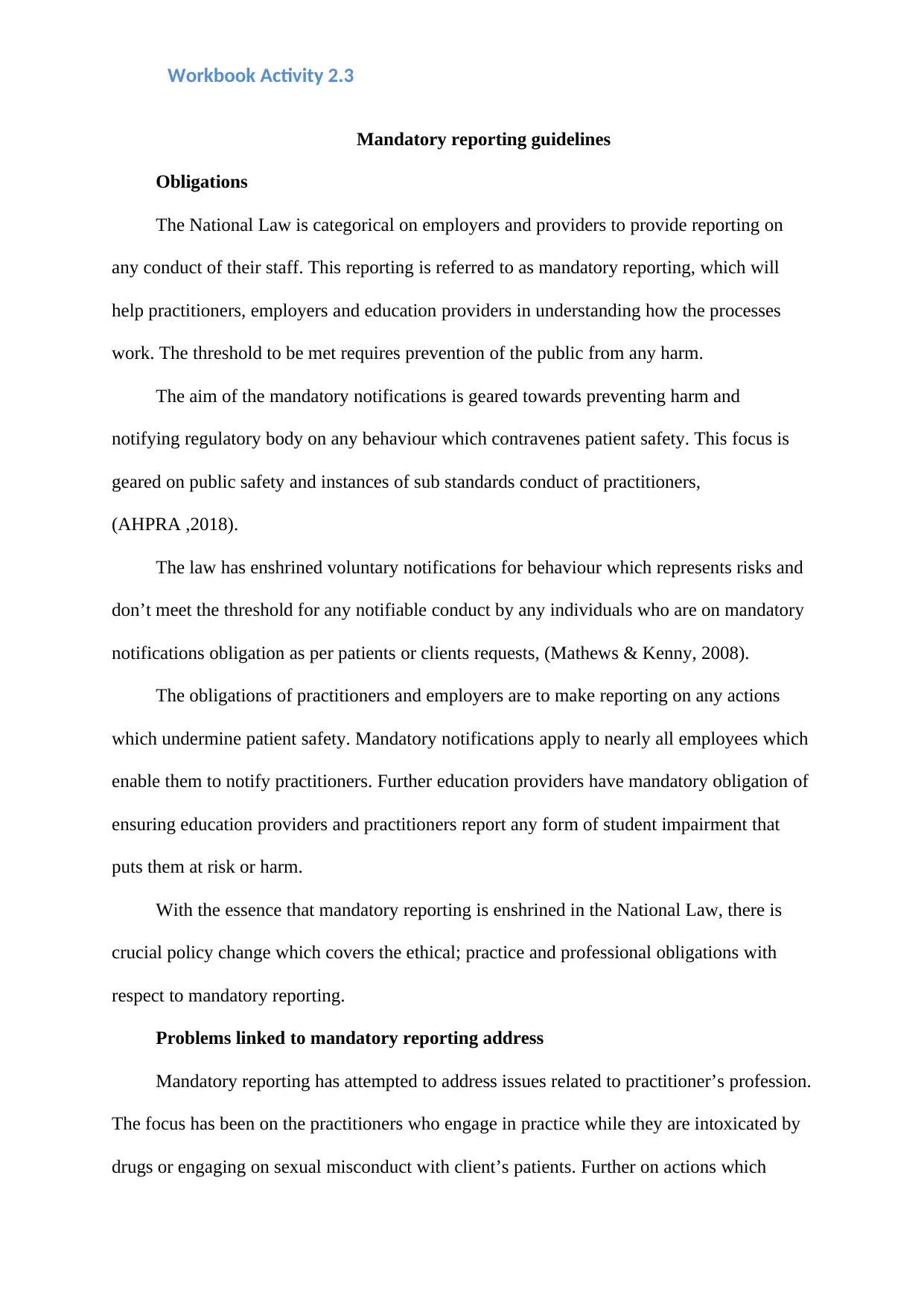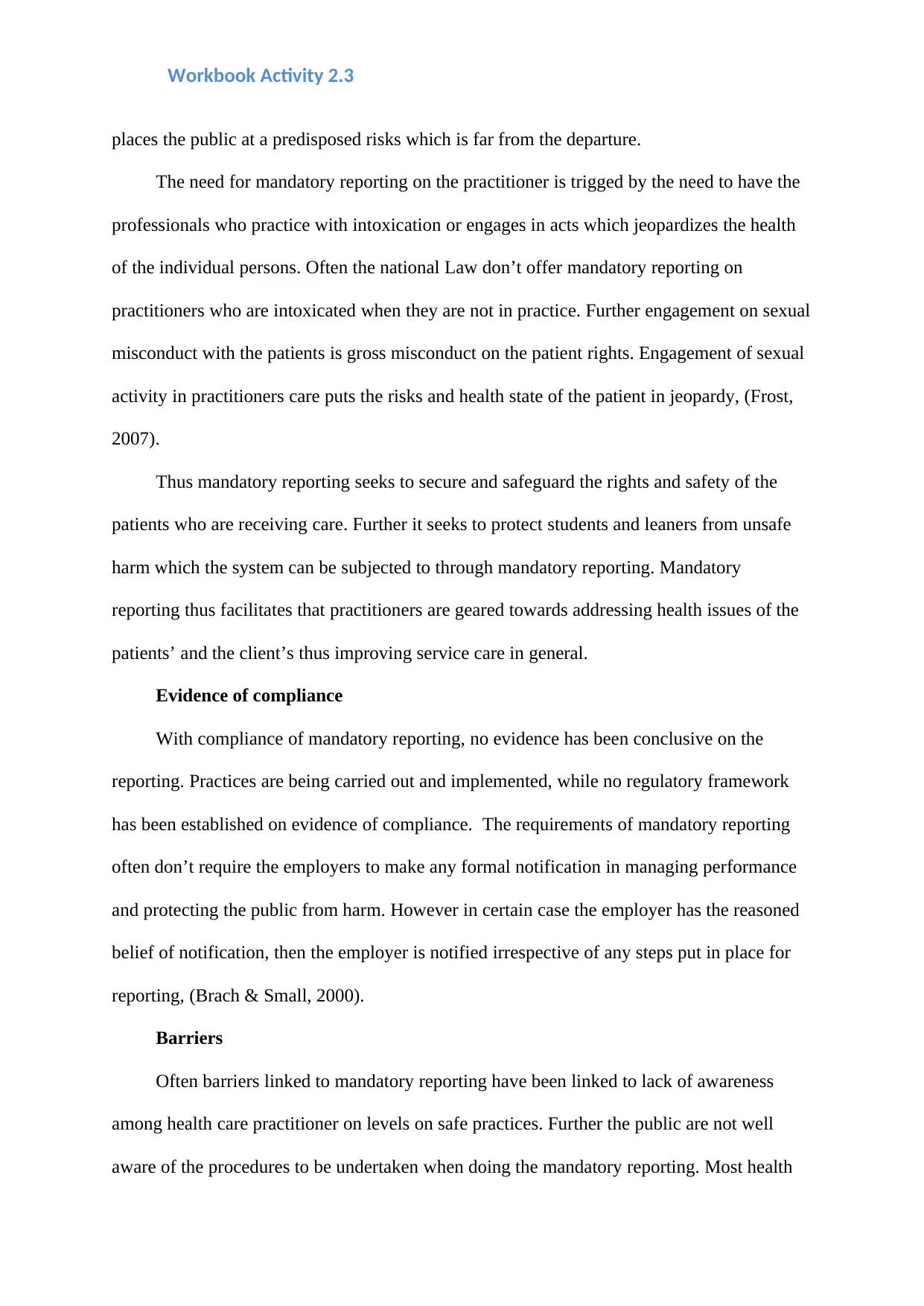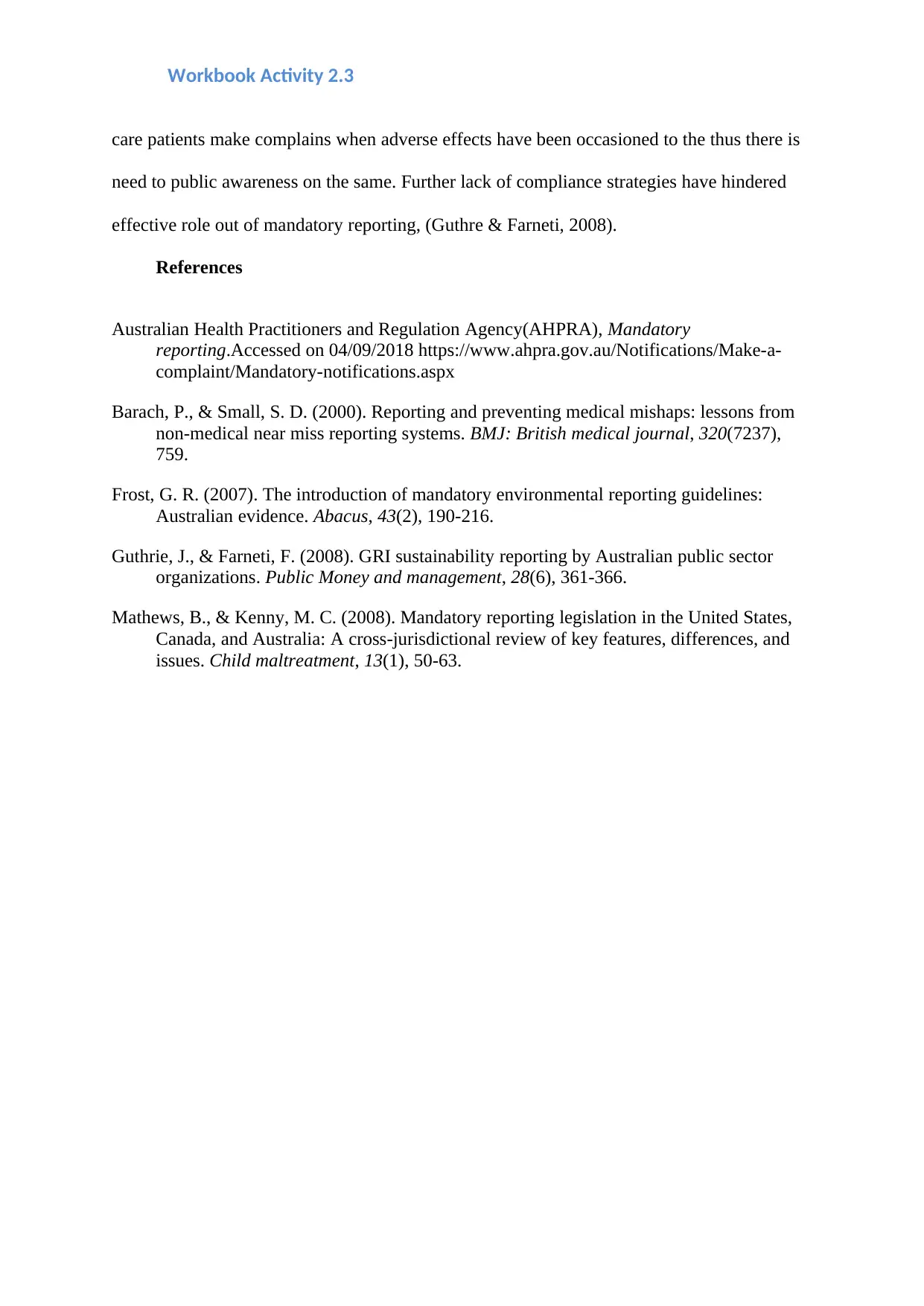PUN214: Mandatory Reporting, Obligations and Patient Safety
VerifiedAdded on 2023/06/14
|3
|843
|439
Homework Assignment
AI Summary
This assignment delves into the critical analysis of mandatory reporting guidelines and obligations within the healthcare sector, particularly concerning patient safety. It examines the legal frameworks, including the National Law, that mandate healthcare practitioners and employers to report conduct that could potentially harm the public. The analysis extends to the problems associated with mandatory reporting, focusing on issues such as practitioners practicing under the influence or engaging in sexual misconduct, and the need to safeguard patient rights. It further explores the evidence of compliance, barriers to effective implementation, and the role of awareness among healthcare practitioners and the public. References to AHPRA guidelines and scholarly articles provide a comprehensive understanding of the subject. Desklib offers similar solved assignments and resources for students.
1 out of 3










![[object Object]](/_next/static/media/star-bottom.7253800d.svg)